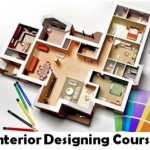Exploring the New York Institute of Interior Design and Technology
The New York Institute of Interior Design and Technology (NYIIDT) is a leading educational institution dedicated to fostering excellence in the field of interior design. With a long-standing reputation for academic rigor and practical experience, NYIIDT offers a comprehensive curriculum that empowers students to excel in the competitive industry of interior design.
NYIIDT offers a range of programs tailored to the diverse needs of students, including associate degrees, bachelor's degrees, and certificate programs. The curriculum is designed to provide students with a solid foundation in the principles of interior design, including space planning, color theory, lighting design, and furniture selection. Students also gain hands-on experience through internships, studio projects, and real-world collaborations.
One of the key advantages of NYIIDT is its faculty, composed of experienced professionals who are active in the field of interior design. Students benefit from the insights and expertise of industry leaders, who share their knowledge and guidance throughout the program. The faculty is committed to providing personalized attention to each student, ensuring that they receive the support and mentorship they need to succeed.
NYIIDT's state-of-the-art facilities provide students with the resources they need to excel in their studies. The school features modern classrooms, design studios, and a dedicated library that houses a vast collection of design books, periodicals, and other materials. Students also have access to advanced software and technology, allowing them to stay up-to-date with the latest design trends and techniques.
Beyond the classroom, NYIIDT fosters a vibrant and supportive community for students. The school hosts a range of events, guest lectures, and networking opportunities that allow students to connect with industry professionals and build valuable relationships. NYIIDT also has a strong alumni network, providing students with access to mentorship, job placement assistance, and continuing education opportunities.
Graduates of NYIIDT are highly sought-after by leading design firms and organizations. The school's reputation for producing well-rounded and industry-ready professionals has earned it a strong reputation among employers. NYIIDT graduates are equipped with the skills, knowledge, and confidence needed to make a meaningful contribution to their field.
If you are passionate about interior design and seeking a transformative educational experience, the New York Institute of Interior Design and Technology is an exceptional choice. With its rigorous curriculum, experienced faculty, state-of-the-art facilities, and supportive community, NYIIDT provides students with everything they need to succeed in the competitive world of interior design.

Interior Design

Interior Design

Interior Design

Interior Design

10 Best Interior Design Schools In The Us Decorilla

10 Best Interior Design Schools In The Us Decorilla

Interior Design

The 25 Rooms That Influence Way We Design New York Times

Interior Design Aesthetics 22 Projects That Explore Trending Styles Archdaily

The 25 Rooms That Influence Way We Design New York Times
Related Posts








